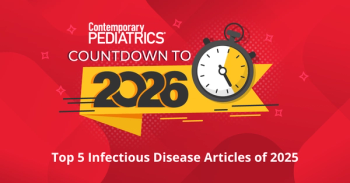
Elimination means everyone: screening and management of hepatitis C in infants and children
At IDWeek 2023, a presentation on the latest recommendations for screening and management of hepatitis C in the pediatric population.
An estimated 4.6 million Americans are infected with hepatitis C virus (HCV), and while adults comprise most of this population, noted Ravi Jhaveri, professor of pediatrics at Ann & Robert H. Lurie Children's Hospital in Chicago, Illinois, believes that “elimination means everyone.”
Jhaveri is an expert on HCV pathogenesis, vertical transmission, and treatment, and he serves as a member of the AASLD and the Infectious Diseases Society of America HCV guidance website, which disseminates peer-reviewed, evidence-based recommendations for clinicians regarding testing, management, and treatment of HCV infection.
At his session, “What’s new in screening and management of hepatitis C in infants and children,” he reminded infectious diseases doctors that while pan-genotypic direct-acting antivirals are indicated for all HCV patients aged over 3 years of age, and achieve a nearly 100% cure rate, rates of HCV are rising as IV drug use continues to burden communities.
Since 2020, the CDC has recommended universal screening for all adults aged over 18 years, with repeat screening for pregnant persons during each pregnancy to reduce vertical transmission. However, while historically thought to represent a disease of “boomers,” between 20,000 to 50,000 children have chronic HCV infection, with vertical transmission rates between 1000-1700 per year.
Jhaveri suggests that in a system that works well for adults who see their provider annually, if they are tested, referred for treatment, and reside in a state without restrictions on treatment, many are left behind. In practice, pregnant persons may not be tested by their obstetrician, they may lose insurance after delivery, and there is no organized tracking for exposed infants.
With advances in real-time polymerase chain reaction (PCR) testing, CDC guidelines currently aim to help fill the gap for exposed infants. Instead of serological testing at 18 months of age, which misses 70-90% of cases, a pragmatic approach of HCV PCR testing at 2 to 6 months of age is calculated to be a cost-saving measure for at-risk children.
Since “elimination means seize every opportunity for treatment,” Jhaveri later turned to the adolescent population currently left out of screening recommendations. As teenage use of IVDU has steadily risen since 2011, providers at Ann & Robert H. Lurie Children's Hospital started adding on HCV PCR testing to lipid and HIV screening for adolescents, resulting in an increase in screening to 35%.
As this rapidly changing field continues to evolve, providers are reminded that AASLD and IDSA offer continuously updated recommendations for testing, managing, and treating hepatitis C at
Reference
Jhaveri R. What’s new in screening and management of hepatitis C in infants and children? IDWeek 2023. October 12, 2023. Boston, Massachusetts.
Newsletter
Access practical, evidence-based guidance to support better care for our youngest patients. Join our email list for the latest clinical updates.



